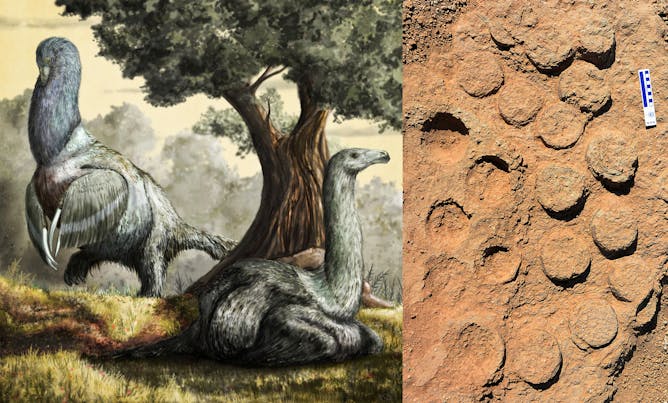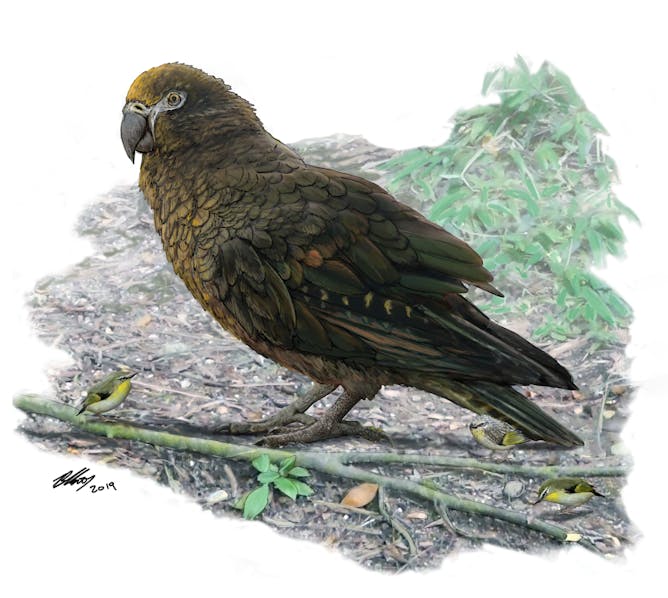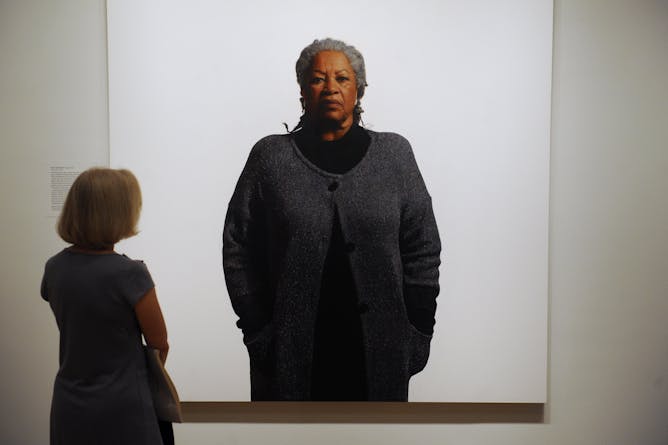|
|
|
Editor's note
|
|
The more we learn about dinosaurs, the less they seem like the scaly lizards of Jurassic Park. Take the Therizinosaurs: their feathers and powerful hind legs made them rather bird-like, while their long, trailing arms and curved claws were more reminiscent of sloths.
The recent discovery of a huge trove of fossilised eggs thought to be laid by a Therizinosaur complicates this picture further. The evidence suggest these dinosaurs buried their eggs and protected their nests, much like certain species of megapode birds and members of the crocodile family do today.
The researchers behind the find came to this conclusion by comparing the fossilised eggs to those of modern megapodes. But our author Jason Gilchrist, a behavioural ecologist who studies how animals live their lives, thinks we can take the comparison further. He argues these dinosaurs may have worked as a community to protect each other’s nests but that, once they hatched, the young dinosaurs would have been left to fend for themselves.
That’s not the only feathery discovery we’ve learnt about this week as an extinct species of giant parrot almost one metre tall has been discovered in New Zealand – and nicknamed Hercules. We’re also mourning the death of American literary giant Toni Morrison, and wondering why bubbles come in so many sizes.
|
Stephen Harris
Commissioning + Science Editor
|

|
|
Top stories
|

Therizinosaurs and their fossilised eggs.
Mark Witton/Kohei Tanaka
Jason Gilchrist, Edinburgh Napier University
New research suggests some dinosaurs buried and protected eggs in groups.
|

Heracles inexpectatus on the forest floor, with three small wrens foraging at its feet.
Brian Choo
Trevor H. Worthy, Flinders University
The newly discovered _Heracles inexpectatus_ stood nearly a metre tall. And its fossil bones sat undiscovered on a museum shelf for more than a decade before its hefty status was finally appreciated.
|

EPA/Michael Reynolds
Tessa Roynon, University of Oxford
With her writing, and her work as a publisher, Morrison brought the African-American experience to the fore in the US and around the world.
|

Blowing bubbles is fun and also involves a lot of science.
strelka/Shutterstock
Ed Llewellin, Durham University; Elena Patyukova, Durham University
Bubbles in fizzy drinks are full of science you probably didn't know about - and which can even be found in volcanoes!
|
Environment + Energy
|
-
Mark O. Cuthbert, Cardiff University; Richard Taylor, UCL
Good news – underground aquifers could be a reliable source of drinking water in sub-Saharan Africa even as the climate warms.
-
Caroline Wood, University of Sheffield
Disposable coffee cups demonstrate that recycling could be successful – with a bit of joined-up thinking.
|
|
Business + Economy
|
-
Richard Murphy, City, University of London
Seemingly a mix of hype, economic stimulus and tax cuts, boosterism appears to be an economic credo with shaky foundations.
-
Tris Dyson, Nesta; Piotr Gierszewski, Nesta
Challenge prizes have triggered some great leaps forward.
|
|
Politics + Society
|
-
Will Mason, University of Sheffield
Police crackdown operations are likely to exacerbate the structural inequalities that can influence criminality in the first place.
-
Steve Hewitt, University of Birmingham; Christabelle Sethna, University of Ottawa
Not all mass shooters are white supremacists, but they are nearly all men.
|
|
Arts + Culture
|
-
Thomas Moynihan, University of Oxford
Realising the silence of outer space was what made us appreciate our precarious position down on this pale blue dot – so beginning our obsession with extinction.
|
|
Health + Medicine
|
-
Dominic Partridge, University of Aberdeen; Alex Johnstone, University of Aberdeen
Emulsifiers are in everything from ice cream to mayonnaise.
|
|
Science + Technology
|
-
Sarah Wurz, University of the Witwatersrand; Joshua Kumbani, University of the Witwatersrand; Justin Bradfield, University of Johannesburg; Neil Rusch, University of the Witwatersrand
Working with bone artefacts from archaeological sites in South Africa's southern Cape region, we've been able to show that some implements might have been used for sound production in the past.
|
|
| |
Featured events
|

|
Rewley House, 1 Wellington Square, Oxford, Oxfordshire, OX1 2JA, United Kingdom of Great Britain and Northern Ireland — University of Oxford
|

|
Institute of Mental Health, University of Nottingham Innovation Park, , Nottingham, Nottingham, NG7 2TU, United Kingdom of Great Britain and Northern Ireland — University of Nottingham
|

|
34 Broad Street, Oxford, Oxfordshire, OX1 3BD, United Kingdom of Great Britain and Northern Ireland — University of Oxford
|
|
|
|
| |
| |
| |
| |
| |
|
|
|
|
|
|
|